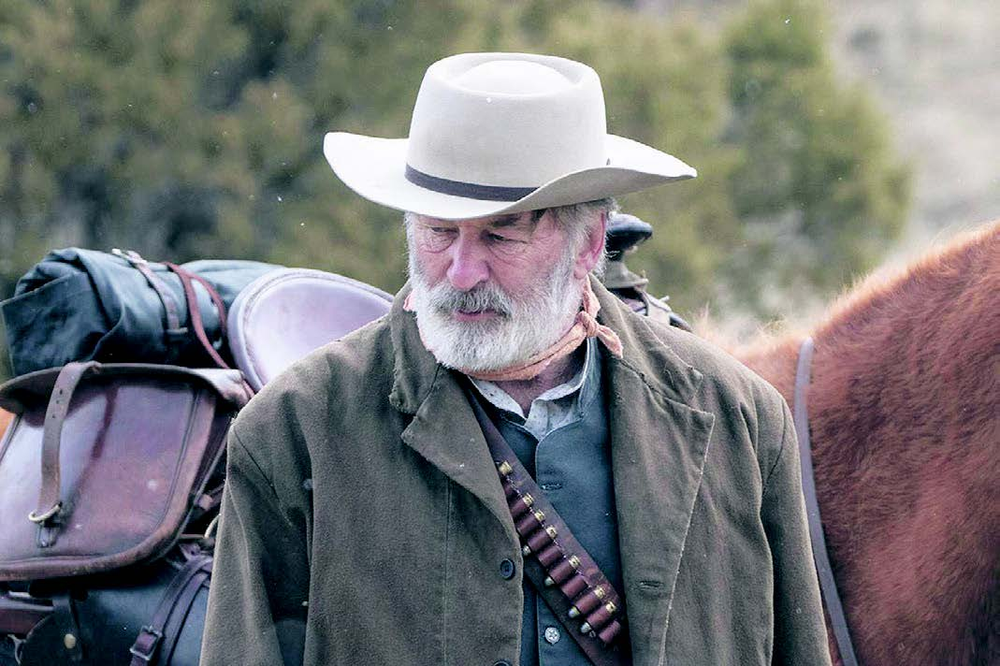
By Alex Marshall and Julia Jacobs
Just over three years ago, Alec Baldwin was rehearsing a gun draw on the set of the western “Rust” in New Mexico when the weapon discharged, unleashing a live round that fatally struck cinematographer Halyna Hutchins and injured director Joel Souza.
The incident triggered criminal investigations, lawsuits, and a reevaluation of real firearm usage in Hollywood. Amidst all these events, the film was finished in Montana, with a new cinematographer and exclusively prop weapons permitted on set, by a crew determined to honor Hutchins’ final contributions.
On Wednesday, the 133-minute feature had its global debut at a prestigious, albeit smaller, film festival in Torun, Poland, known as Camerimage, which celebrates cinematography.
The choice to finalize and premiere “Rust” has sparked criticism both from within the industry and from the outside, leading to a premiere that was saturated with controversy. Just a day prior to the screening, Hutchins’ parents and sister released a statement via their attorney expressing their discontent with the decision to move forward with the premiere, while several festival attendees in the official messaging chat encouraged a boycott.
However, when the premiere commenced, the theater was approximately three-quarters full, and a moment of silence for Hutchins punctuated the start of the screening.
“It’s challenging to keep Halyna as the focus of the narrative,” remarked Rachel Mason, a filmmaker and friend of Hutchins, prior to the film beginning.
Here’s what you should know about the event.
Was Alec Baldwin present?
Despite Baldwin playing a leading role as a rugged outlaw named Harland Rust, he was absent from the audience on Wednesday.
The festival was represented by Souza, the director who sustained injuries from the shooting when the bullet passed through Hutchins, embedding in his shoulder, and Bianca Cline, the cinematographer who completed the film.
Souza and Cline carried on with the project after Hutchins’ widower, Matthew Hutchins, provided his approval and took on the role of executive producer.
In an interview following the screening, Souza expressed his relief at being able to finally present the film and his pride in showcasing Hutchins’ work. “I hope to shed light on her beyond what transpired,” he remarked.
How did the event confront the tragedy?
In a Q&A right after the screening, Souza recalled that for months following the tragic incident, he couldn’t fathom returning to finish the film. However, over time, he said it became his mission to preserve as much of Hutchins’ artistry as possible and to pay homage to her final undertaking.
Cline described her intent to capture Hutchins’ style meticulously, poring over Hutchins’ notes and consulting with her crew to determine the preferred approach for each shot.
“Halyna and Bianca collaborated beautifully,” Souza noted regarding the two cinematographers, “and they truly executed it wonderfully.”
In the film, the striking resemblance between the narrative and the real-life tragedy is instantly clear when one of the lead characters, a 13-year-old orphan (Patrick Scott McDermott), inadvertently wounds a rancher. The boy’s grandfather, portrayed by a gun-wielding Baldwin, breaks him out of detention and attempts to guide him to safety.
“It’s quite difficult to dissociate the events while viewing the film, particularly with the presence of all the firearms,” remarked Samuel Romero, a cinematographer in attendance. “Moreover, the story itself is poignant: It revolves around an orphan ensnared in a multitude of tragedies, prompting thoughts of Halyna’s son.”
What occurred during the shooting?
The shooting transpired on October 21, 2021, on a ranch located outside Santa Fe, within a set designed to replicate a 19th-century western church, where the script dictated Baldwin’s character to be trapped by law enforcement.
On the fateful day, Baldwin was informed that the firearm he was using was “cold,” implying it should not have had the ability to discharge or injure anyone. Yet, as they prepared for a close-up of Baldwin drawing an antique revolver, it fired a live round.
The discovery that live ammunition had infiltrated the film set was astonishing. Real bullets were prohibited on the set—standard practice in Hollywood—and the armorer was tasked with filling the gun solely with dummy rounds, which are non-functional yet designed to resemble real ammunition for filming. Five additional live rounds were subsequently discovered on set.
Who faced criminal accountability?
The film’s armorer, Hannah Gutierrez-Reed, was found guilty of involuntary manslaughter and is currently serving an 18-month sentence. Dave Halls, the film’s first assistant director responsible for on-set safety, pleaded guilty to a misdemeanor, thereby evading incarceration.
Baldwin encountered several changes in fortune. He was indicted for involuntary manslaughter in early 2023, but the charges were later dropped as prosecutors reviewed new evidence. He faced charges again in early 2024 and stood trial that summer. Following a series of dramatic courtroom events, the judge dismissed the case against him, ruling that the state had withheld evidence that could have clarified how live rounds ended up on set.
Why was the movie brought to completion?
Following Hutchins’ untimely death, her husband and son initiated legal action against the production and Baldwin, asserting that the production’s insufficient safety measures contributed to her death.
As part of a settlement, Matthew Hutchins assumed the role of executive producer. He and his son are set to financially benefit from the movie’s release, although its distribution partner in theaters has yet to be disclosed.
At the time of the settlement announcement, he stated, “I am grateful that the producers and the entertainment community have united to honor Halyna’s last work.”
